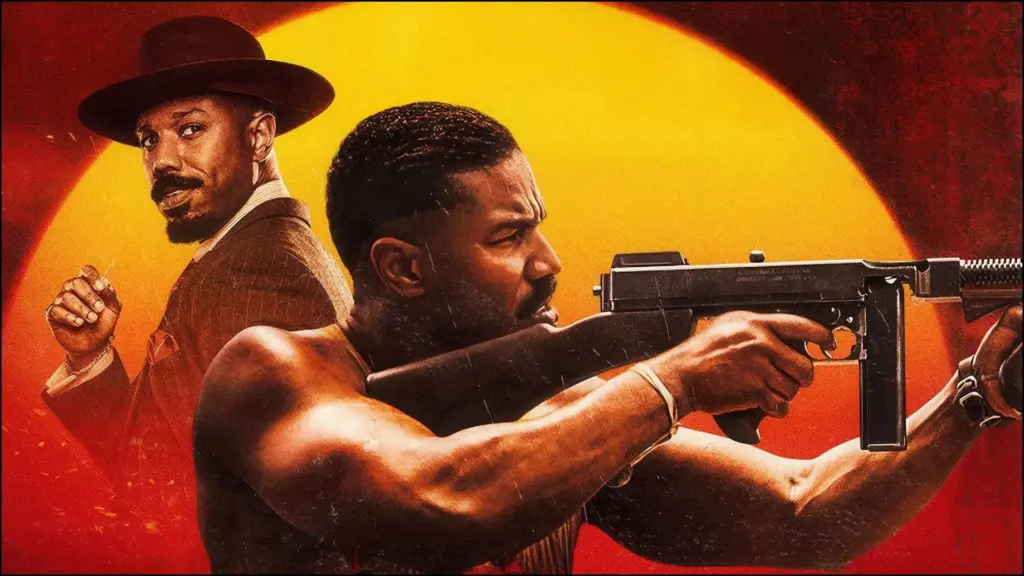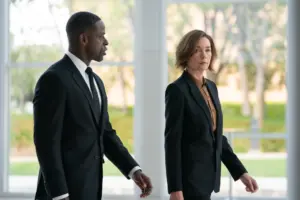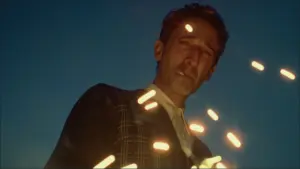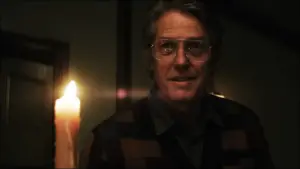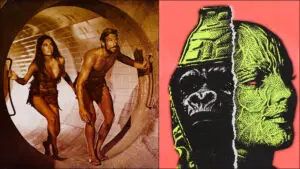After a decade bringing his socially conscious sensibility to Hollywood franchise films like the Rocky sequel Creed and Marvel’s Black Panther movies – and raking in a combined box office of over $2 billion in the process – writer-director Ryan Coogler has cashed in his proverbial “blank check” to produce a truly original and personal exploration of Black history. Coogler’s new runaway hit Sinners is a genre-bending mashup that samples and remixes elements from gangster, western, horror, and musical films.
Audiences and critics have responded so well to Sinners because it is an original idea, not a sequel or a remake, and not based on a video game. Plus it is about something. It’s hard for a film critic to resist a movie with complex enough themes to sustain discussion and analysis. There are so many cultural and cinematic references layered over each other in Sinners, it is impossible to parse them all after one or even two viewings. But the central motif of the film that anchors all the others is Blues music.
The story follows the Smokestack Twins, local celebrities who left their rural Mississippi town to serve in World War I, made a name for themselves as train robbers, and earned a fortune working for Al Capone in Chicago. It’s 1932, a historical context when the Great Depression, Prohibition, and Jim Crow overlapped, a pivotal time in Black history.
The brothers Smoke and Stack, as they are called, are both played by Michael B. Jordan in a marvel of visual effects and subtle performance. Jordan creates two distinct characters. Smoke is dressed in an Irish suit with blue accents. He’s cold but fiery underneath — the businessman who’s always aware of power dynamics, especially the need for financial independence for Black people. Stack is the flashier one, the showman in a red hat and Italian suit who tries to charm his way out of problems before resorting to violence. He’s all about creating community through music and culture.
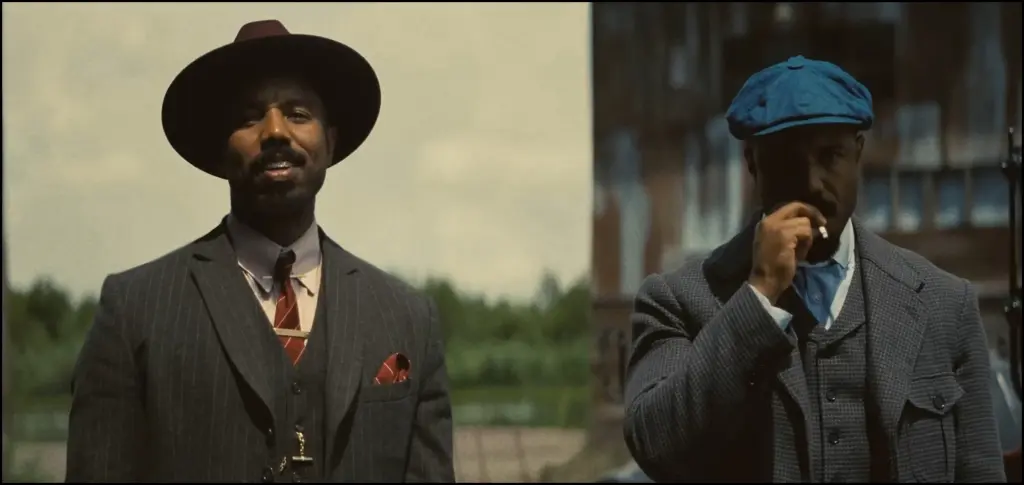
Smoke and Stack return home with a truckload of booze, aiming to open a “juke joint” or dance hall for Black sharecroppers and plantation workers. Of course, the KKK isn’t happy about a Black-owned business coming to town, but the heavily armed and ruthless twins are ready to face them. They’re less prepared when, as in From Dusk Till Dawn or Salem’s Lot, vampires suddenly invade the otherwise realistic story halfway through the runtime.
Yet Sinners begins and ends with the Smokestack Twins’ younger cousin Sammie “Preacher Boy” Moore, played by real life singer Miles Caton. Sammie is an aspiring musician who loves the Blues but whose father, a Christian minister, disapproves. By framing the film with Sammie, Coogler establishes his gangster/vampire movie as the story of a young man’s temptation toward the music his church sees as sinful.
For the character of Sammie, Coogler draws on the African American folktale of landmark Delta blues guitarist Robert Johnson who, according to legend, met the Devil at a crossroads in rural Mississippi where he sold his soul to become a master Blues musician. (The Coen Brothers reference the same folktale in their Depression-era musical O Brother, Where Art Thou?, also set in Mississippi just a few years later in 1937.)
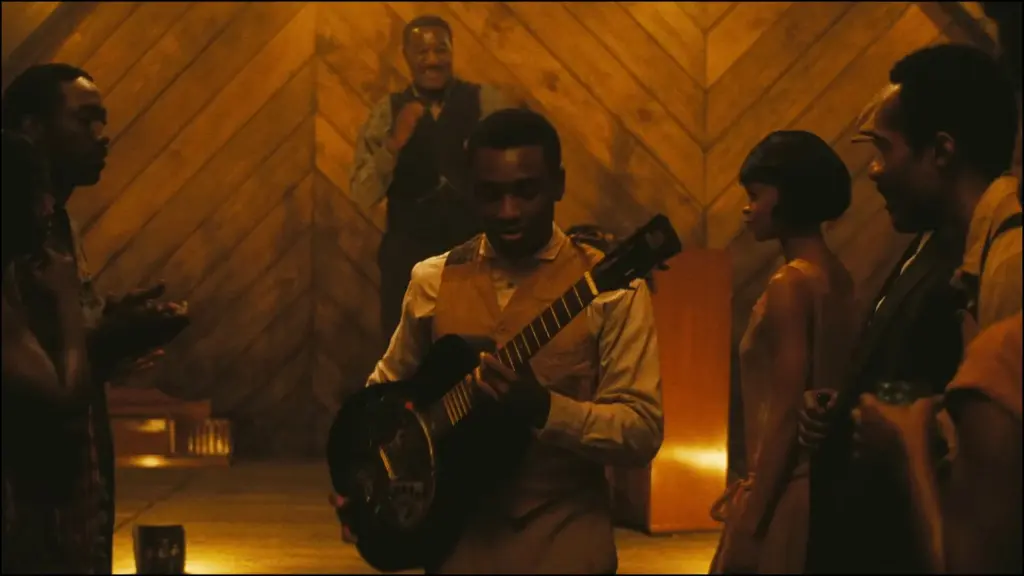
Some, like Sammie’s father, interpret the demonic origin of the Blues as a Christian indictment of the sinful music’s enticement to drunkenness and debauchery. Only the Devil could produce sinful music like that, they say. But Coogler draws instead on the Hoodoo tradition, a syncretistic American folk religion based on West African traditions. According to Hoodoo, the mysterious man you might meet at a crossroads is not the Biblical Devil but Papa Legba, the African god who can grant the power to conjure spirits from the past and the future. Sammie’s otherworldly musical power, then, would not be demonic but a spiritual gift that unites his ancestors and descendants in one unbroken thread.
This musical heritage is embodied in a bravura sequence at the centerpoint of Sinners when Sammie first performs at the juke joint. Filmed in one long take, the camera moves from room to room while Sammie plays. The spirits of guitar players and dancers, from West Africa to Brooklyn, suddenly appear as Sammie’s song magically begins to incorporate elements of rock, hip hop, and techno music.
Sammie’s song is a powerful magic spell, opening the veil between life and death. This attracts the attention of the vampires, just as Sammie’s father had warned.
“If you keep dancing with the devil,” the preacher tells his son in the opening scene, “one day he’s gonna follow you home.” But these vampires are descended from Irish immigrants, and therefore well-acquainted with Catholicism. When Sammie tries to pray the Lord’s Prayer, the vampires simply join in. What allows Sammie to fight them off is not a crucifix but the silver in his guitar, which seems to cause them real pain.
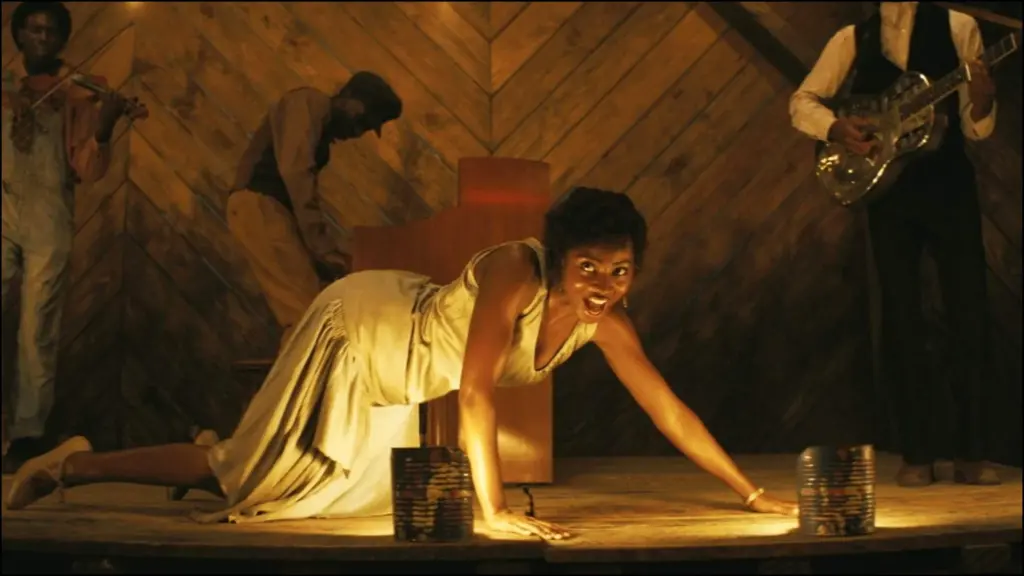
Sammie does indeed resist the devil’s temptations, and he even uses the tools he learned in church, namely music. But he uses those tools in new and surprising ways, singing the Blues instead of Gospel. His parents might call him a sinner for this, yet Coogler suggests that Sammie’s ancestors would recognize his music as an extension of their own ways of warding off evil.
Smoke’s estranged wife Annie (played by Wunmi Mosaku) is a Hoodoo practitioner who explains that vampires are dead people whose souls are trapped in this world, unable to return to their ancestors. This further explains why the Irish vampires need Sammie’s musical power to connect with the past. For Coogler, the vampires stand in for all those who have lost a connection to their folk traditions. This goes for Irish Americans, too. We – and I include myself in this – often try to assimilate Black culture into a bland, melting-pot Americana in order to import some kind of soul and tradition into our national identity. Coogler is calling out the unique ethnic heritages that were lost when Europeans became “White.”
The villain of Sinners on this reading is cultural assimilation, which makes the Irish a perfect case study. They were initially excluded from their oppressor’s system and treated as inferior. Then they bought into White culture, religion above all, and were able to win the status of “White.”
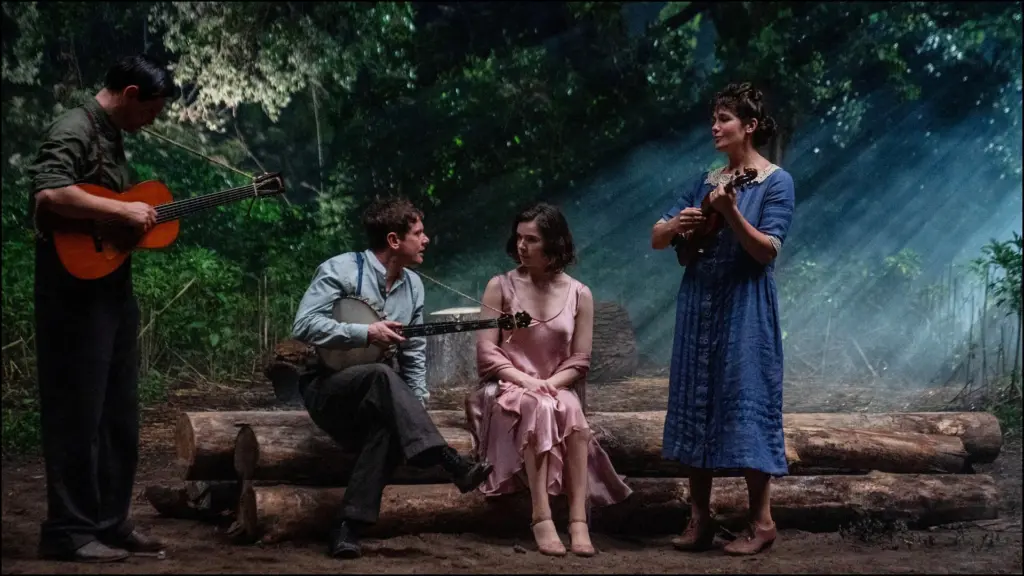
In 2025 it seems impossible not to see the movie as targeting White Christian Nationalism of the MAGA variety — those who want to claim themselves as the dominant culture and force every other culture to assimilate to them. Here this is symbolized by an undead horde, drawn by Black culture’s music and attempting to appropriate it. For these people the reason Black lives don’tmatter is that they refuse to assimilate. Black people want to have their own cultural traditions and expressions, just for themselves, from Hip Hop to the Blues to African Religion.
But identifying the vampires as MAGA is too simple. Coogler’s suspicion of assimilation goes beyond conservatism. The vampire leader Remmick (played by Jack O’Connell) says he wants to fight the KKK and create “a new clan based on love” where we are all “one people.” He wants to build “heaven right here on earth.” This is a much more tempting vision based on liberal values.
Too bad it doesn’t work. We can never overcome death, as Smoke knows from personal experience, since he and Annie lost their infant daughter. Hoodoo spells and potions couldn’t save their child, and now their only hope of seeing her again is in the afterlife. Yet if we liberals have given up our connection to the heaven of our ancestors, we become vampires, the walking dead, trapped on this earth trying in vain to build a replacement heaven for ourselves.
Ultimately Sinners belongs in the tradition of allegorical Black cinema popularized Jordan Peele’s Get Out. Like Peele, Coogler effortlessly weaves political subtext into his pulpy genre films. But Coogler brings a revolutionary flavor to the exercise as the son of a working-class family from Oakland, birthplace of the Black Panther Party – in contrast to the more respectable, intellectual, Obama-style liberalism Peele learned growing up with a White mother on the Upper West Side of Manhattan.
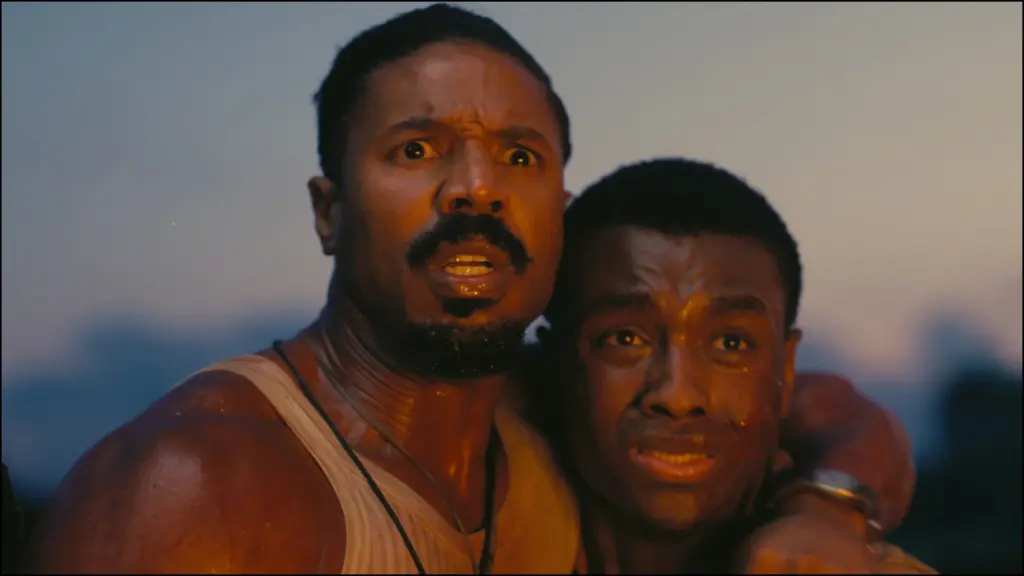
With its central tour-de-force musical sequence, Sinners plays like the story of the Blues itself, how it was born out of Black suffering. It was not just personal loss but cultural loss. It was the loss of a brief period of optimism after Reconstruction, where it looked like Black people would be able to build their own place in this land — before the rebirth of the KKK and the renewed pressure for either assimilation or Jim Crow-style segregation.
Sinners is a lament for the time of Freedom Colonies, where former slaves founded businesses, banks, hospitals, and schools for themselves, independent of the White majority. The tragic flaw that led to the Smokestack Twins’ downfall was their financial dependence on White capital. Not only did their money come from illegal activities, but their Black customers could only pay with plantation scrip, not real U.S. dollars. If there had been Black banks to borrow from, their juke joint would have been set up to succeed, and they would never have been tempted by Remmick’s devilish gold.
Like Black firebrand James Baldwin, Coogler argues that integration was a mistake, or at least poorly enacted (which is not quite the same as saying life was better during segregation). In The Evidence of Things Not Seen, Baldwin writes that “Americans decided that desegregation meant integration, and, with this one word, smashed every Black institution in this country” (p. 23).
The problem, as Baldwin diagnoses it, is that when the Civil Rights Movement successfully forced White institutions like banks and businesses to admit Black customers, this had the unforeseen effect of moving money out of the Black community to White banks. Those White banks then continued to discriminate in quieter ways. Thus integration arguably set Black independence back further than it had been prior to integration — when there were Black towns like Mound Bayou, Mississippi, which Coogler name-checks in Sinners.
Coogler is arguing for a society of free people based on conceding true power and self-determination to Black people. It seems significant that the only people able to identify, withstand, and eliminate the threat of the vampire assimilationists are the indigenous Choctaw tribe. They understood themselves to be in a war for cultural survival.
When Liberalism’s vision of heaven on earth sacrifices ethnic heritage for national uniformity, this just makes racism more subtle. The North might not have Jim Crow, but as Smoke notes, “Chicago ain’t shit but Mississippi with tall buildings instead of plantations.”
Desegregation is morally necessary, but facile integration is an insidious temptation to abandon one’s roots. The Blues, however, is the lifeline that connects Black people from Africa to Mississippi to Chicago to Oakland and beyond. In Sinners, the true “sinners” are those who sell their soul to become White, not those who fight the devil of White Supremacy by celebrating Black culture.

